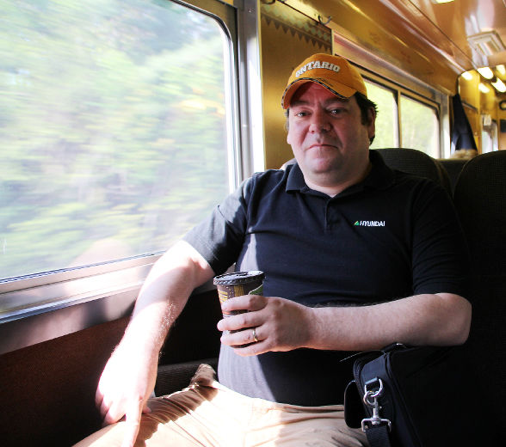This is a subtitle for your new post

The town of Churchill, Manitoba, is Canada’s only Arctic seaport, and is strategically located on the coast of Hudson Bay, where Canadian National Railway operated what became known as the Hudson Bay Railway. Since 1926, the Port of Churchill has played a critical role in the development of Canada’s North, focusing primarily on the export of grain. In 1996-97, American-based company, Omnitrax, acquired over 1,000 kilometres of CN railway in Manitoba, including the line to Churchill. The port of Churchill supported Canada’s claim to sovereignty in the North, as It is a venture that has continually captured new business in the North from international customers and investors (Port of Churchill, 2012).
However, things took a turn when the Canadian Wheat Board (CWB) was dismantled in 2012 by the Conservative government under Stephen Harper’s leadership, in order to ‘promote a free market’ with the privatization of the organization (Macdonald, 2014). CWB monopolized the purchase of wheat and barley, acting as a marketing agency on behalf of Western Canadian farmers, and thus transferring profits back to the farmers. As explained by Jake MacDonald (2014)
“The CWB’s mandate was to pay farmers a base price for their grain, identify markets, negotiate the best price, deliver the goods, issue advance cheques and make final payment after the crop was sold. If the wheat market went up, farmers pocketed the profits. If the market went down, the government absorbed the loss. Nothing was subtracted from the farmer’s share except the cost of marketing and delivery.”
The government approved the purchase of CWB by Global Grain Group, a joint venture between Bunge Canada and SALIC Canada (a subsidiary of the Saudi Agricultural and Livestock Investment Company) for $250 million, with the remaining equity of CWB being held by its member farmers (Macdonald, 2014). This resulted in a huge loss in premiums, and buyers of wheat having to cover unexpected costs (such as storage time, interest expense, exchange rates) which the CWB had always covered before, and thus companies used their own portside facilities in other cities, depleting the grain exports out of Churchill. As such, the Port of Churchill was closed and what was left behind was a ghost town. It had huge implication across Western Canada, causing farmers across the prairie region to suffer (H. Gow, personal communication, October 2nd 2017).
In 2013, it was announced by the Federal-Provincial Task Force on the Future of Churchill that since 1997, Ottawa and Manitoba have spent or committed $197 million “to benefit, directly or indirectly, both the privately owned port and rail line leading to it, and the community of Churchill” (Hutchinson, 2016).
Despite this, in 2014, Omnitrax abandoned the plan to haul oil to the port by rail, and in 2015, negotiated, but failed to finalize, a sale of the railway and port to a consortium of Manitoba First Nations (Hutchinson, 2016). Manitoba invested another $800,000 for capital improvements, but in July of 2016, Omnitrax announced a suspension of the summer shipping season, and also entered into a court dispute with the province over outstanding payments (Kavanagh, 2017.
From 2016 until the flooding this past Spring, Omnitrax, in conjunction with Via Rail, were operating a limited passenger service to get people and their groceries/basic resources in and out of Churchill (H. Gow, personal communication, October 2nd 2017). However, with the washouts that occurred this past year, rail cars cannot bring in supplies or transport people in and out of Churchill. This has harmed the tourist economy, and caused the price of scarce goods to skyrocket, as supplies now need to be flown in, which has almost tripled the cost (H. gow, personal communication, October 2nd 2017).. Omnitrax has stated that they need $60 million dollars for repairs, and that they need government assistance to cover these costs (Rabson, 2017). The Canadian government has argued that it is Omnitrax’s responsibility to repair the tracks and restore rail service. The differentiating views have resulted in what is essentially a standoff between the Canadian government and the American company, Omnitrax (Rabson, 2017). The federal government has said they will step in, but this has yet to happen.
As of June 2017, a $20 million-dollar deal to finance the sale of the rail through a loan, was made between Omnitrax and Missinippi Rail LP, a group of different Manitoba First Nations communities, including Mathias Colomb Cree Nation, one of three owners of Keewatin Railway (Kavanagh, 2017). There is speculation that the federal government has pulled their support from this deal, and there is question as to whether or not the province of Manitoba will support the deal as well (Kavanagh, 2017). However, the feds have stated their commitment to help with interim funding to fix the line, and to help facilitate the sale.
In the meantime, over 20 sections are washed out on the 820-kilometre rail link from Churchill to The Pas (H. Gow, personal communication, Octovbr 2nd 2017). An entire community, a community that was once Canada’s only Arctic sea port, has been reduced to a ghost town, with people moving away for lack of jobs, resources, and soaring costs.
We will continue to update you on the Churchill situation as the story continues to unfold, but I want to leave you with a little perspective. There are lessons to be taken from the struggles faced by our friends in Churchill. Lesson one is clear as day; Indigenous bands are capable of running a rail and making viable economic decisions when it comes to transportation. Two examples are Tshieutin Rail in Quebec and Keewatin Rail in Manitoba, both of which have provided an essential service to the communities surrounding them while also providing economic development and job opportunities for their band members. Ultimately, these are two perfectly good operations, and there is no reason to think that the Missanabie Cree cannot do it with Mask-wa Oo-ta-ban, nor is there reason to think that Missinipi Rail cannot accomplish it in Churchill.
The second comfort we can find from Churchill’s struggle is that the people of Algoma – of CAPT, of NEORN – are not alone in advocating for rail. We must stand in solidarity of support the development of rail infrastructure across Canada.
For additional information on this matter, check out Transport Action Canada, who were very helpful in providing resources for the writing of this article.
References
Hutchinson, B. (August 2016). Port in a Storm. National Post. Retrieved from http://nationalpost.com/features/port-in-a-storm-people-in-churchill-believed-only-weather-could-defeat-them-they-were-wrong
Kavanagh, S. (September 2017). Competing groups join forces to buy rail line and Port of Churchill. CBC News. Retrieved from http://www.cbc.ca/news/canada/manitoba/churchill-omnitrax-rail-dumas-spence-ottawa-manitoba-port-1.4275738
Macdonald, J. (November 2014). Why so many farmers miss the Wheat Board. The Globe and Mail. Retrieved from https://beta.theglobeandmail.com/report-on-business/rob-magazine/why-so-many-farmers-miss-the-wheat-board/article21810531/?ref=http://www.theglobeandmail.com&
Port of Churchill. (August 2012). Port of Churchill. Hudson Bay Port Company. Retrieved from www.portofchurchill.ca
Rabson, M. (September 2017). Omnitrax told: Fix Churchill rail line now or sell it. CTV News. Retrieved from http://www.ctvnews.ca/politics/omnitrax-told-fix-churchill-rail-line-now-or-sell-it-1.3581551
Would you like to see the Mask-wa Oo-ta-ban, or "Bear Train," operating again between Sault Ste. Marie and Hearst?
Take the Bear Train Survey & Let Us Know


Stay Up to Date
Join our email list.
Join Newsletter
Thank you for signing up for our email list!
Please try again later.

